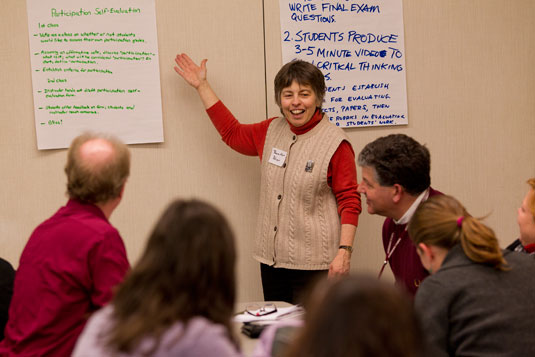Winter faculty conference explores learner-centered teaching

How do you learn best? By listening to a professor lecture or by making a video that puts what you’ve learned in lecture into your own words, demonstrating comprehension and critical thinking? For today’s students, the answer is increasingly video and other alternatives to the traditional college fare.
With this shift in mind, nearly 150 Temple University professors gathered last week to delve into learner-centered teaching at the Teaching and Learning Center’s Winter Faculty conference.
Conference keynote speaker Maryellen Weimer, an authority on college teaching and associate professor at Penn State-Berks Lehigh Valley, explained how roles change with learner-centered teaching: teachers become guides and facilitators while students take on more responsibility for their own learning. The approach emphasizes translating passive learning (listening) to active learning (doing something yourself).
During six breakout sessions, participants explored all facets of learner-centered teaching, from the classroom climate to student resistance. Associate Professor of Religion Rebecca T. Alpert led the most-attended session: “Less teaching, more learning: shifting responsibility for learning to the student.” Participants explored how to guide students in performing learner-centered tasks, many of which traditionally have been handled by the teacher: organizing the content, generating the examples, asking the questions, designing assignments and solving problems.
In the process, the group shared learner-centered techniques they have used with success and came up with new techniques they could try going forward.
“We’re all here to think about our teaching and to start a new semester with new ideas, said Alpert. “It’s good to hear what other teachers are doing in the classroom and for us to encourage each other in trying new approaches.”